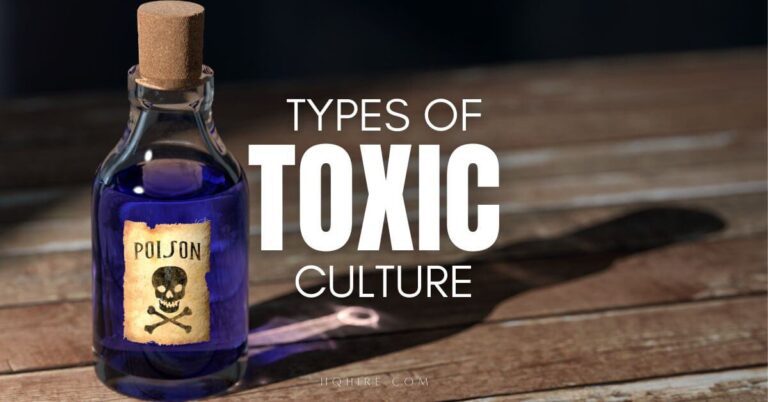Workplace harassment can have a profound impact on both individuals and the work environment. 17.9% of employee both men and woman have experienced harassment at work and this does not count those who suffer silently.
Let’s take a look at how to handle harassment in the workplace and learn how to identifying evidence of harassment in the workplace.
How To Handle Harassment In The Workplace
1. Let the Person Know that the Behavior is Unwelcome
This may sound simple but according to research, only 1 in 10 victims of harassment let the perpetrator know that their actions are unwelcome. The rest just either kept silent or choose to leave the job.
Mostly this is due to fear of any consequences such as losing job security when reporting the incident to their superior or company. This has allowed the perpetrator to become even bolder in his/her act of harassment.
What should you do?
- Assuming it is emotionally safe, invite the person to discuss the issue and explore ways to be more productive together. Explain that sarcastic comments are not appropriate, not professional, and not appreciated.
- But if the bullying is of a more serious nature and you may have attempted to resolve the issue but there is no sign of improvement or the harassment has gotten worse, then it is time to tell someone else about it.
2. Report the Misconduct
In most companies, there are policies in place for you to report such misconduct. Every employee should have the right to work in a safe environment. Report any instance of harassment if you don’t feel comfortable handling it yourself.
Advice from an attorney in Los Angeles, California:
“Employees should not be left to handle such issues on their own. They should obtain the support of trained professionals and ensure they have the support and backing of the company in dealing with such issues.”
Your employer will be able to help you, but you must let them know about the issue. Inform your supervisor, someone in human resources, or the person within your organization who is designated to deal with harassment. Remember to follow the policy for employees to report harassment.
You can choose to file your report in writing. And keep a copy of the written complaint you make to your employer and anything you receive from them.
3. Write it Down
If you are experiencing harassment at work. It will be a good idea to write it down in a journal or something similar. Be as specific as possible when you are writing about the harassment.
Write down the details of the following:
- Which day and at what time the incident occurs?
- Who is the person causing the harassment?
- Where does the harassment occur?
- What is the act of harassment?
- Any witnesses when the harassment occurs?
If you reported the harassment incident write down the following:
- To whom do you report the harassment and the relationship you have with the person?
- What did the person say and what happened in response?
Tips when writing:
- Be as accurate as possible
- Be as objective as possible
Finally remember to keep the record safe, probably somewhere at home and easily accessible by you. Do not keep it at work as you will never know when will someone sees it without your consent.
4. Policy of Conduct
Policy of conduct offers a guideline on how you should conduct yourself in the company when interacting with other co-workers or outsiders during office hours. Oftentimes, this will list down the company’s harassment policy.
As a company employee, you should follow this policy of conduct at all times. If an employee fails to follow the policy of conduct disciplinary action may be performed by the relevant department as per the company’s policy.
Sometimes this “Policy of Conduct” is also called the employee’s manual. Virtually all medium to large businesses follow these policies strictly and you are usually protected by these policies.
Unfortunately, some employees exercising their rights under such policies can sometimes be targeted for retaliation. Care has to be taken when exercising your rights in this policy. Given the proper channel, you will always follow the step on how should you report the act of harassment.
Employees are protected from reporting the harassment behavior if it constitutes as unlawful harassment under the Civil Right Act which is also sometimes called as the “Anti-Harassment Act”.
Title VII of the Civil Rights Act of 1964 is a federal law that prohibits employers from discriminating against employees on the basis of sex, race, color, national origin and religion. It generally applies to employers with 15 or more employees, including federal, state and local governments. Title VII also applies to private and public colleges and universities, employment agencies, and labor organizations.
But this does not currently protect you from being retaliated against by the employer. As long as their motive is not based on your race, gender, disability, age, or other protected category.
5. Get Help
Most large corporations have a team who is in charge of handling such cases in regard to harassment at work, or an ombudsman. Before you approach the team, it may be a great idea if you can talk to other people at work who may have witnessed the act of harassment or is too a victims of the act of harassment. These people may have to support you in the case.
If your company does not have a team who is in charge of handling harassment at work or an ombudsman.
The Human Resources department may be the next best choice. HR typically represents the company’s interest, and if the act of harassment affects the company’s interest, they will step in and help to resolve the issue.
Ombudsman are usually the best people you can approach to report an incident.
As an ombudsman is an official which is usually appointed by the government. He/she is unbiased and will investigates the complaints against businesses, financial institutions, or government departments or other public entities, and attempts to resolve the conflicts or concerns raised, usually by mediation or by making recommendations.
Retaliation When Reporting Harassment Complaint
As an employee, you are protected by the Equal Employment Opportunity Commission (EEOC), where they enforces laws that make any form of workplace harassment illegal in the workplace.
Unfortunately, 75% of workplace harassment victims experienced retaliation when they spoke up about their experience.
Retaliation against anyone cooperating with an investigation is unlawful, is a serious form of crime that can have legal liability.
You should always try to let your HR handle the harassment issues. But if you are being fired from your job due to being the complainant, you can File a Charge directly to EEOC for the harassment investigation.
When Should You File a Complaint and Report Workplace Harassment?
Reporting workplace harassment is a critical step in addressing the issue and protecting your rights. But how do you know when it’s the right time to take action? Here are some key indicators that should prompt you to report workplace harassment promptly:
- Persistent Harassment: If you’re experiencing consistent and repeated instances of harassment, it’s essential to report it as soon as possible. Don’t wait for it to escalate further.
- Emotional Distress: When harassment begins to take a toll on your emotional well-being, such as causing anxiety, depression, or affecting your job performance, it’s time to take action.
- Physical Harm or Threats: Any form of physical harassment or threats of harm should be reported immediately. Your safety should always be a top priority.
- Violation of Company Policies: If you have clear evidence that the harassment violates your company’s policies and code of conduct, report it in line with the established procedures.
- Witnesses: If there are witnesses to the harassment, encourage them to come forward and report what they’ve seen or experienced. Their accounts can corroborate your claims.
- Documentation: When you have documented instances of harassment, including dates, times, locations, and any supporting evidence, it’s a strong signal that you should report it.
- Impact on Work: If the harassment is affecting your work performance, making it difficult for you to perform your job effectively, you should report it to prevent further damage to your career.
- Retaliation: If you fear retaliation for reporting harassment, don’t let that deter you. Reporting retaliation is equally important, and your company should have measures in place to protect whistleblowers.
- Unaddressed Complaints: If you’ve previously reported harassment, and it hasn’t been adequately addressed or has continued, it’s essential to escalate the matter to higher levels of management or HR.
Reporting a harassment complaint to your direct supervisor or HR department when you experience harassing behavior is not only about seeking justice for yourself but also about creating a safer work environment for all employees.
Address harassment early as it is your right to work in a place free from harassment, and taking action is the right thing to do.
When in doubt, consult with HR professionals or legal experts who can provide guidance on the best course of action for your specific situation. Your comfort and safety in the workplace are paramount, and reporting harassment is a crucial step in preserving both.
Warning Signs of Workplace Harassment
Dealing with workplace harassment includes understanding the signs of harassment at work. It is necessary to protect yourself and your coworkers from inappropriate behavior.
- Verbal Harassment
- Non-Verbal Harassment
- Discriminatory Behavior
Each of these types of harassment have some some common indicators where you can identify it when it happens to you or your coworkers.
Verbal Harassment
Most common form of harassment is in the form of verbal, it is the things that the person say, and the tonality of how it is being said.
- Offensive Language: Verbal abuse that includes slurs, insults, sexual jokes or derogatory comments targeting an individual’s race, gender, or other personal characteristics.
- Insults and Name-calling: When colleagues or superiors repeatedly belittle you through name-calling or insults, it constitutes verbal harassment.
Non-Verbal Harassment
The less obvious is non-verbal, these form of harassment is generally harder to handle and can escalate into physical harassment in the workplace
- Intimidating Gestures: Non-verbal intimidation can involve threatening gestures, aggressive postures, or even menacing looks.
- Offensive Emails or Messages: In the digital age, harassment has taken on new forms, such as offensive emails or messages intended to create a hostile work environment such.
Discriminatory Behavior
Discriminatory behavior is when a certain individual treat you or anyone unfairly solely because of your background, race, religion and gender. It is totally unacceptable but most minority groups suffers from these kind of unfair treatment and workplace harassment in any form is a serious offence.
- Unfair Treatment: If you notice that you’re consistently treated unfairly based on your age, gender, race, or other personal characteristics, it could be a sign of discrimination.
- Exclusion or Isolation: Deliberate exclusion from work-related activities or isolation from colleagues is a form of harassment, indicating a hostile work environment.
Common Types of Harassment in The Workplace
Workplace harassment can take various forms, each with its own characteristics and challenges. Understanding these types is crucial for dealing with them appropriately.
Sexual Harassment
- Unwanted Advances: Sexual harassment includes unwanted physical and sexual advances or requests for sexual favors that create an uncomfortable work environment such as; inappropriate touching of the victim, or making inappropriate physical gestures.
- Inappropriate Comments or Jokes: Sexually explicit comments or jokes, sexual messages that make the employees feel uncomfortable.
Bullying
- Repeated Harmful Behavior: Bullying involves repetitive, harmful behavior aimed at intimidating, belittling, or humiliating someone. Some may escalate into physical assault or other forms of harming of the victim.
- Power Imbalance: Typically, the bully holds power over the victim, creating an environment where it’s difficult to report the behavior.
Discrimination
- Based on Age, Gender, Race, Pregnancy etc.: Discrimination can manifest as unequal treatment or opportunities based on personal characteristics.
- Unequal Opportunities: Victims of discrimination may be denied promotions, raises, or job opportunities based on factors unrelated to their qualifications.
Cyberbullying
- Online Harassment: In the digital age, harassment extends to the online sphere, including social media attacks, offensive emails, or digital threats.
- Social Media Attacks: Harassment can spill over into personal social media accounts, affecting both your work and personal life.
Sexual harassment in the workplace is the most common harassment claim and the “Me Too Movement” have brought thousands of high profile harassment case into the light.
Understanding the types of workplace harassment is essential for addressing them effectively and put a stop to the harasser as workplace harassment is a serious offence and should not be tolerated.
- 7 Examples of Pregnancy Discrimination in The Workplace (Need to Know)
- How to Deal with Pregnancy Discrimination at Work (Proven)
- 7 Things to Know about Pregnancy Discrimination at Work
- Can You Get FIRED From Your Job While Pregnant? (Answered)
- How to Resign During Bond Period Without Paying Bond? (Solved)
Join over 11,000+ achievers who are committed to achieving their career goals!






